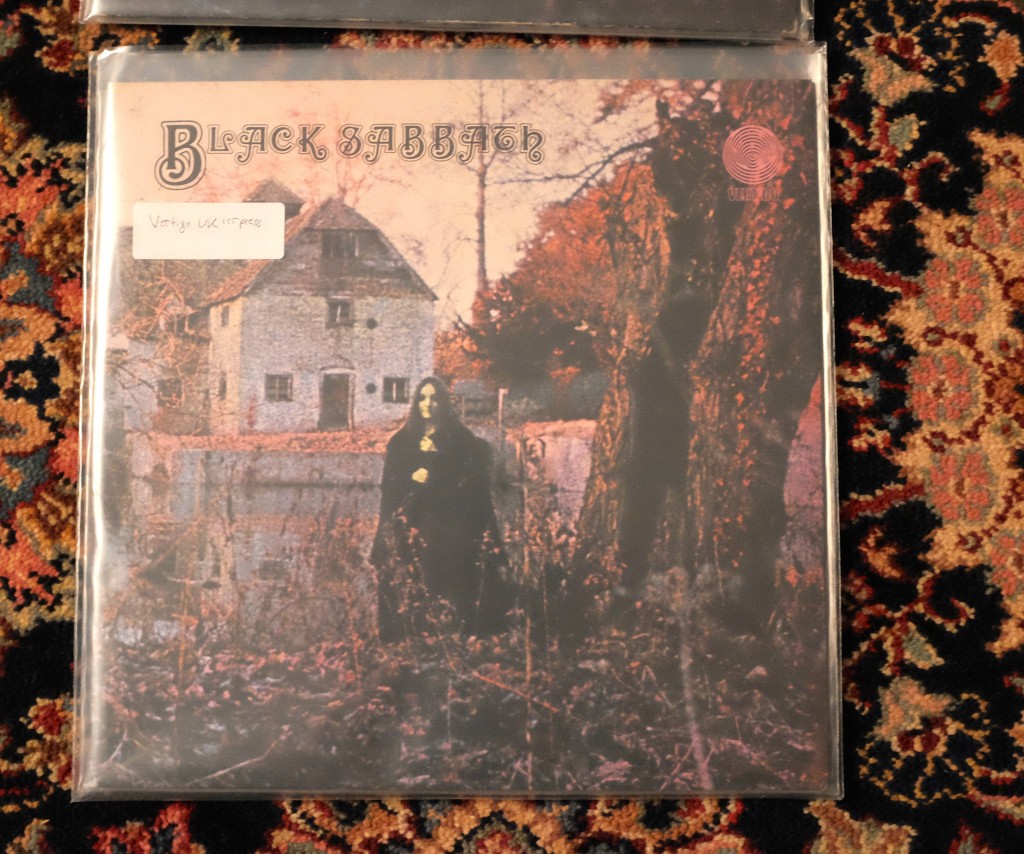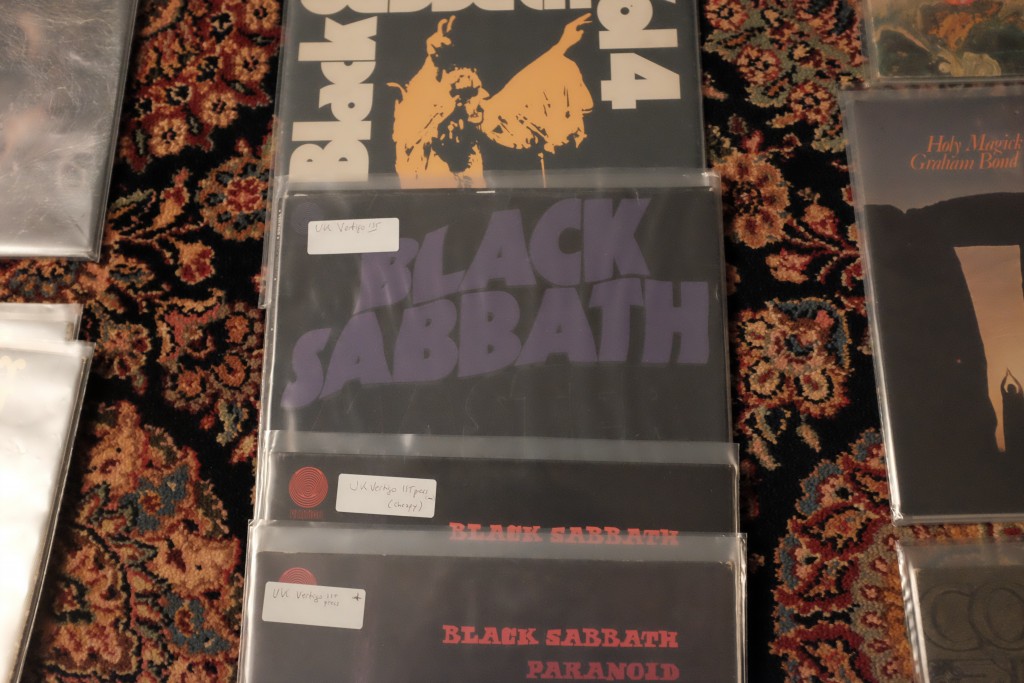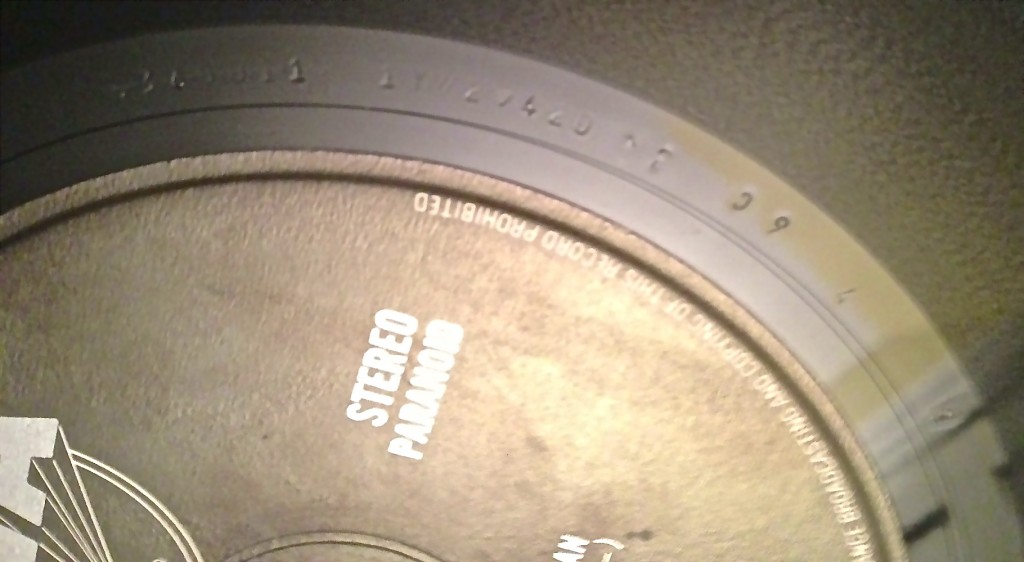
Any discussion of the Vertigo Swirl label would be incomplete without some mention of the early Black Sabbath albums since they are, from today’s vantage point, probably the best known band to have signed with the label and are often the entry point for many who are buying Vertigo Swirls today. Sabbath’s first four albums, including Paranoid and Master of Reality, were first issued on Vertigo in the UK and a number of other countries (but notably, not the United States, where the band had signed to Warner Bros.).
For those venturing into the sometimes deep waters of UK Vertigo Swirls today, these first four albums are a lure if only because the music is well-known; even though I was never a Sabbath fan at the time of their release, you couldn’t avoid hearing Paranoid at the time. Here’s my take, for what it is worth: the early UK Swirls definitely sound far better than any other version of the same records I have heard, including the original Warner U.S. pressings, and later pressings made in the UK and Europe. That said, the high frequencies on both Paranoid and Master of Reality sound a bit rolled off; what these albums do not lack is bass and punch. Given the music, which is heavy on power chords and driving riffs mixed with Ozzy’s distinctive vocals, the overall tonal balance of these records works.
In some ways, the first album, which was not, at least in the States, as widely played at the time as the follow up, Paranoid, is the most interesting as an historical artifact; the band was already exploring the satanic mythology it would build on, and made use of the flatted fifth (the so-called “Devil’s chord”) to good effect. The album art, for what it is worth, is probably the best of these four albums.
My suspicion is that more casual Black Sabbath listeners are more likely to be drawn to Paranoid and Master of Reality, both of which fetch real money these days on early UK Swirls. (MOR seems to be the more expensive of those two if it is accompanied by the original poster).
I have not compared the original UK Vertigos of these albums with all of the contemporaneously released Vertigos from other territories; I can say that in my experience with other Vertigo albums, the UKs tend to sound more immediate than their ex-UK brethren, and at least from a market/collector’s standpoint, the prices today reflect that. One well-known “shortcut” that can get you a taste of the UK Vertigo magic is the early WWA pressings of these albums from the UK that share the original Vertigo matrix numbers. Vol 4 was the last Sabbath album released in the UK on Vertigo; the band’s next album, Sabbath Bloody Sabbath, was released on the WWA label, and for a time, the back catalog was re-released on WWA using what appeared to be Vertigo metal parts. To go this route, you should verify the matrix numbers of any WWA copy.
WWA pressing of Paranoid with Vertigo stamper numbers (faintly crossed out)
A comparison of one of these WWA copies with Vertigo stampers against a true UK Vertigo still puts the true Vertigo UK firmly ahead of the WWA sonically.
Overall, Vol 4, to my ears, is the least well recorded of the first four albums- I have a UK first press Vertigo, a UK second press Vertigo and an old NEMs pressing from Holland that was issued in 1976. (Note, the current releases on the NEMs label are not the same as those from the mid-70’s). While both Vertigos are better than the old NEMs reissue, it may not worth the hundreds of dollars difference in price to seek out the Vertigo unless Vol 4 is very high on your list of Black Sabbath records.
Here’s where I come out on these albums: if you really like the early Sabbath stuff and want to hear it at its best, these four albums are probably worth investing in as original UK Vertigo Swirls. If you are mildly intrigued, buy Paranoid or Master of Reality (sans poster will save you a considerable sum) on an early UK Swirl. Clean copies should sound pretty fabulous. But, without trying to put a damper on things, there is far more to the original Swirl catalog than the Sabbath albums, and some of it is better recorded too. If you are ambivalent about Sabbath, but want to hear what the Swirls have to offer, go for the 1970 Annual instead.
ADDENDUM: A contributor on the Hoffman fora took me to task for failing to note the Vertigo “Spaceship” label-briefly mentioned in my interview of Olav Wyper- as another alternative for these records. For the sake of completeness, it is a fair comment. As to price, it is my impression that the Spaceship-labelled Vertigo of Vol 4 is quite rare, and for that reason, commands a fairly high price, perhaps even higher than the ‘Swirls’ (it may be more collectible too, for those of that persuasion). The earlier Sabbath albums also were apparently released for a brief period on the Vertigo Spaceship label but, without knowledge of the quantities pressed, I cannot speak with any certainty as to how rare those are. What I do know is that Black Sabbath left Vertigo after Vol 4 was released in 1972 and went to WWA for their fifth album, Sabbath bloody Sabbath, released in 1973. During this transitional period, Vertigo also changed their label art from the emblematic “Swirl” to the “Spaceship” label; thus, there is a small window where Sabbath and the newer “Spaceship” art coincided.
Credit: VinylFan1973 for this “catch” with a kind word for Hoffmanite moomaloo who noted that “Spaceship” Sabbaths may be more rare than the “Swirls’ (though the question of market price, at least on Vol 4, remains, for me, an open issue). Thanks to both. (And let me know if any of you find a Spaceship Vol 4 in the current market on the cheap-I’m not buying, but would welcome the information).
B.H.

